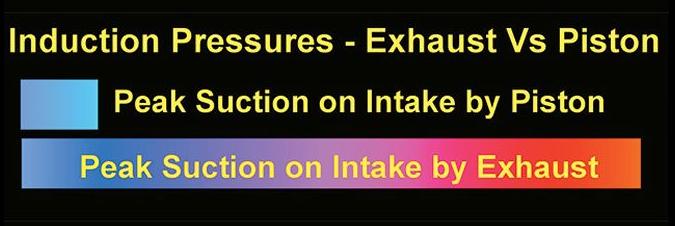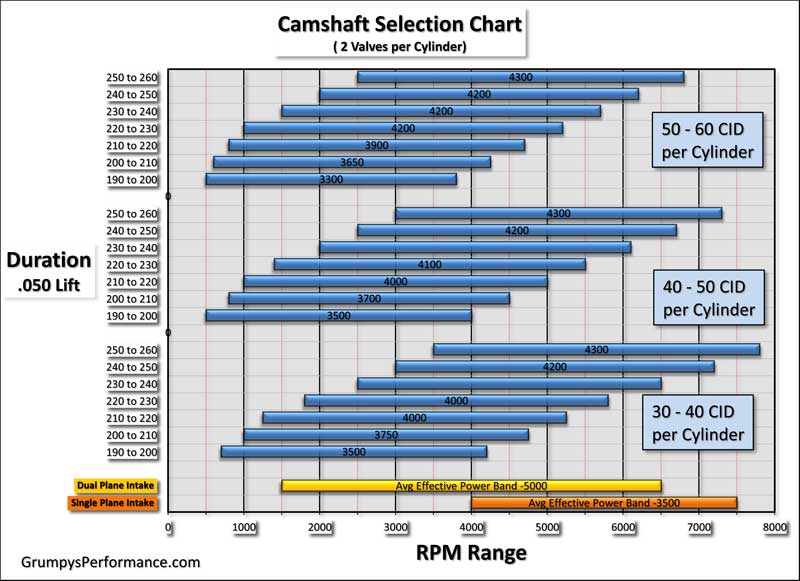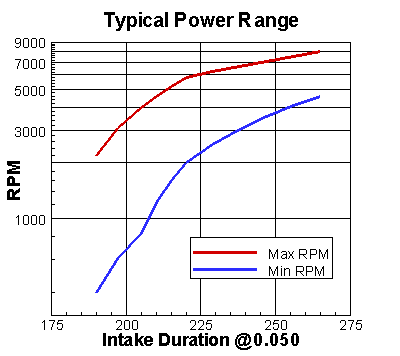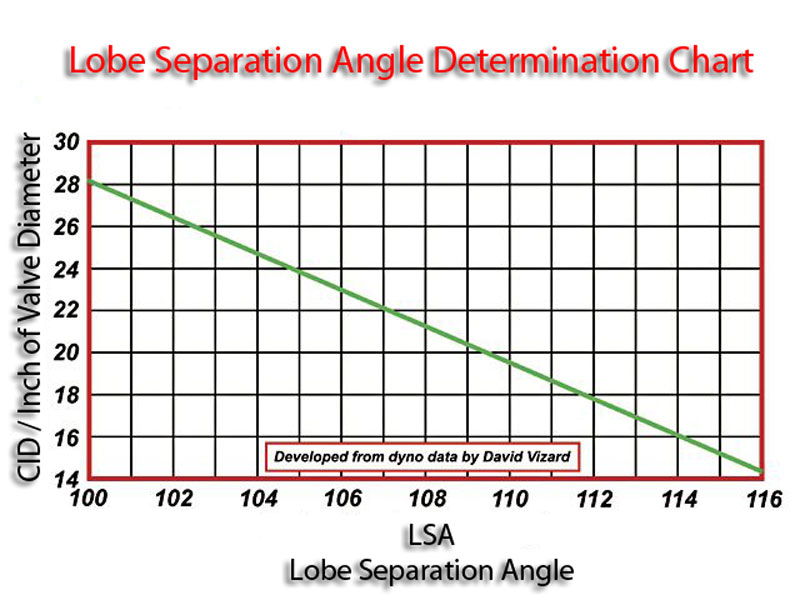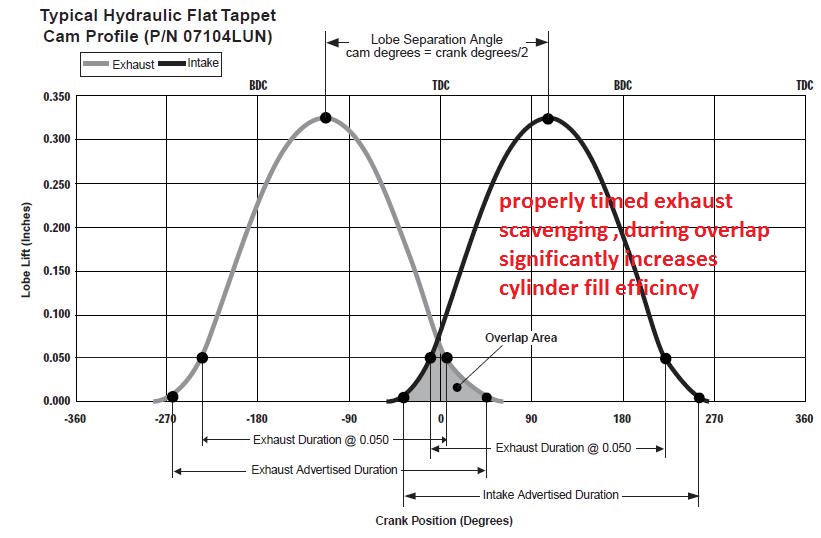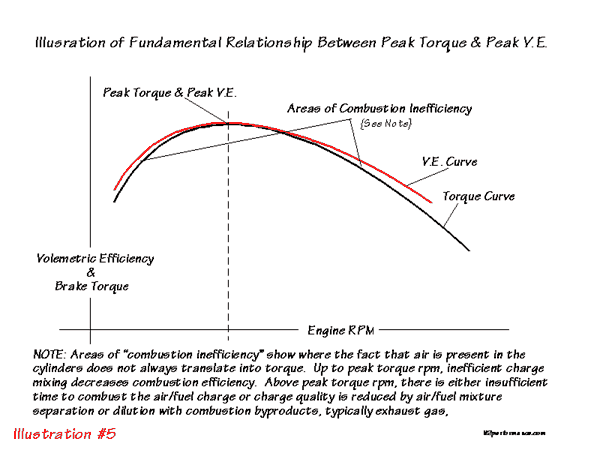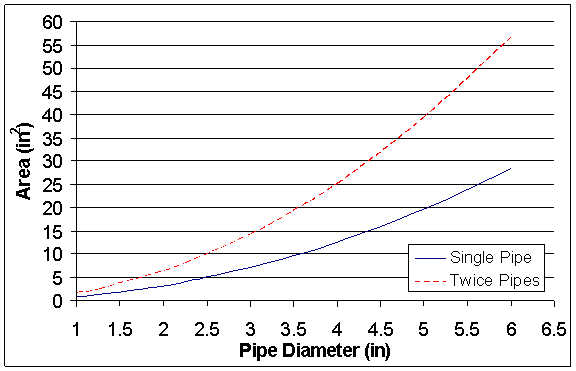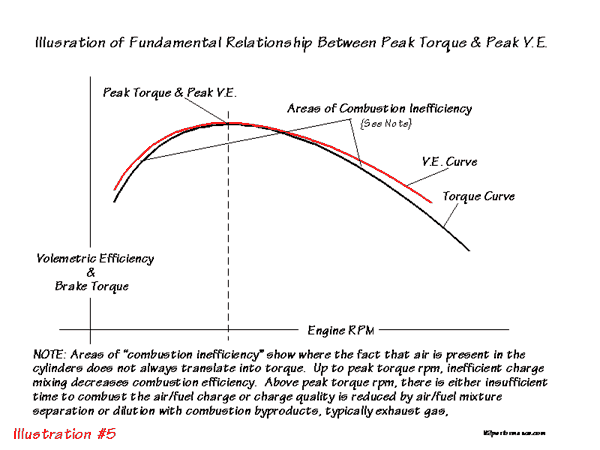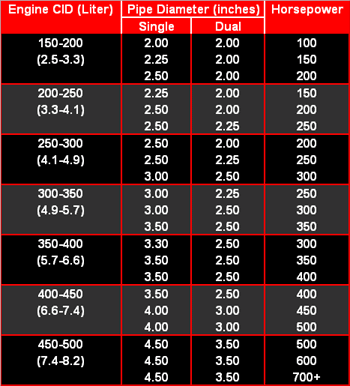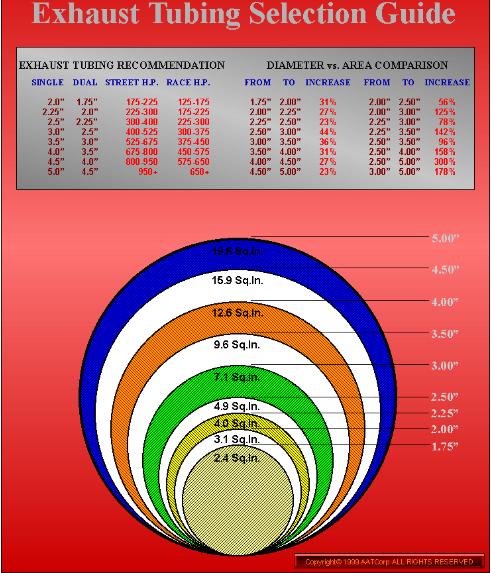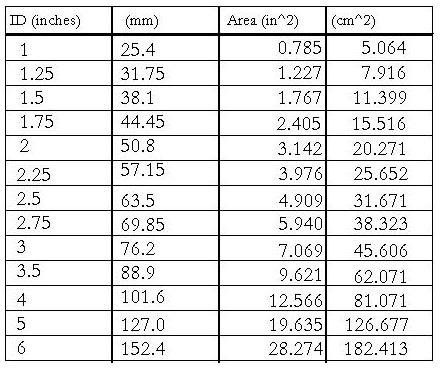heres an engine build I found that is obviously going to be a rather impressive street/strip engine,
looking over the components use Id have made a few minor changes like a bit longer duration on the cam,
like the CROWER 00471 or CRANE 119651, ,
the reason would be to allow those heads to breath more effectively which I have little doubt would result in a small loss of low rpm torque but a noticeable gain in peak power.
they obviously designed the combo to maximize low and mid rpm torque and were willing to sacrifice some peak power to do that, but I'd point out that once your over about 450 ft lbs of torque at 3500rpm-4000rpm, adding additional torque is rather counter productive on street tires
look carefully at the listed valve lift
Intake Valve lift: 0.502
Exhaust Valve Lift: 0.51
vs
the port flow listed valve lift figures,
200cc Intake runners
Flow @ .700 Int: 270/ Exh: 195 cfm
Flow @ .600 Int: 263/ Exh: 190 cfm
it should be obvious that the cam they selected never gets close to maxing out the port flow due to limited valve lift even.
the duration selected is a little bit restrictive for the application,
Intake Duration @ .050: 224
Exhaust Duration @ .050: 230
yes I have to admit that when I personally swapped from a stock stall speed converter
,in my 383 sbc corvette and a 3200 rpm stall speed converter the difference in performance was amazingly better.
swap too a 3.73:1 rear gear and you've noticeably further enhanced that seat of the pants and slam in the back acceleration.
people tend to not fully appreciate the fact that the performance cars drive train gearing, power to weight ratio and the converter stall
(in the case of automatic transmission) must match the engine torque curve if the car is to perform to anything close to its best potential
theres two, sizes ON the SBC O.E.M. REAR CAM PLUG
1.23/32-inch expansion plug or the 1.47/64ths (cam plug)
or
the dorman catalog showed both plugs for 62-68 327 & 67 up 350's also.
This looks like a darn bargain
the double roller cloyes timing chains tend to last longer before they wear and have excess slack
and they can be used with the stock O.E.M timing chain cover
http://garage.grumpysperformance.com/index.php?threads/timing-tabs-and-indicators.1015/#post-49812
https://www.ebay.ca/itm/SB-Chevy-Ch...265086?hash=item2a6c66393e:g:jPgAAOSwRgJXiXxM
plugs are roughly 1 5/8" on a O.E.M block sbc
the small one is dorman # 555-049.
1.and 23/32 o.d.,
the large one is 555-080.
1. and 47/64 o.d.
just be sure an measure the one you knock out or the hole it fits and use an accurate caliper
yet with decent heads the results are still reasonably good, which again shows the importance of selected good cylinder heads
http://www.cranecams.com/product/cart.php?m=product_detail&p=24187
IF YOUR SIMPLY TRYING TO GET A STOCK TPI CORVETTE ENGINE BACK IN SERVICE AS CHEAPLY AS YOU CAN?
the heads and block surfaces must be very carefully examined for damage or warping issues and if found those issues must be corrected, before any new head gaskets installed, over time steam can and will cut grooves in even cast iron blocks and rather easily in softer aluminum. no head gasket will seal a badly machined or warped head or block
btw if youve managed to blow a head gasket on a 1986-91 TPI corvette with aluminum heads
the heads and block surfaces must be very carefully examined for damage or warping issues and if found those issues must be corrected, before any new head gaskets installed, over time steam can and will cut grooves in even cast iron blocks and rather easily in softer aluminum.
keep in mind coolant must have the anti-freeze ratio set at 50%water 50% antifreeze and be replaced at least every 4 years MAX to retain its anti corrosive additives
the stock 1986-91 tpi head gasket FELPRO HS7733pt9
http://garage.grumpysperformance.co...oving-gaskets-the-wrong-way.10464/#post-43962
http://garage.grumpysperformance.com/index.php?threads/head-gasket-related.1859/#post-50617
http://garage.grumpysperformance.com/index.php?threads/which-sealant-goes-where.700/#post-43768
http://garage.grumpysperformance.com/index.php?threads/sbc-head-gasket-choice.11070/#post-49297
Here are some actual results from a back to back dyno run. 1 5/8" Hookers vs. 1 7/8" XS-Power
2.9 TQ and 12.9 HP yea for the 1 7/8"!!
Engine Specs
Chevy small block
4.030” bore x 3.750” stroke
382.8 Cubic Inch Displacement
10.3:1 Compression Ratio
Block: GM 350 4-bolt .030” overbore
Engine Block Style: Stock
Engine Block Material: Cast iron
Main Bolt Style: 4-bolt ARP bolts
Main Caps:
Stock
Main Cap Material: Ductile iron
Align honed Yes
Crankshaft: Eagle 383 Cast Crank - p/n 103503750
Polished by Mile High Cranks
Rear Main Seal Style: 2-piece
Stroke (in): 3.75 in.
Engine Balance: External
Balanced Yes
Rated 500 hp
Main Bearings Clevite MS909HG
Rods: Eagle 6000BST2000
Length Center to Center: 6.000 in.
Rod Beam Style: H-beam
Rod Material: Forged 4340 steel
Rod Finish: Shot-peened
Wrist Pin Style: Floating
Cap Retention Style: Cap screw
Rod Bolt Brand: ARP
Rod Bolt Diameter: 7/16 in.
Rod Bolt Material: ARP
Fastener Yield Strength (psi): 200,000 psi
Rod Bolt Head Style: 12-point
Connecting Rod Weight (g): 645
Big End Bore Diameter (in): 2.100 in.
Pin End Bore Diameter (in): 0.927 in.
Horsepower Rating (hp): 1,200 hp
RPM Rating: 9,500 rpm
Rod Bearing Clevite CB663HN
Pistons: JE Racing 138093
Bore (in): 4.030 in.
Piston Style: Flat top, with two valve reliefs
Piston Material: Forged aluminum
Compression Distance (in): 1.125 in.
Piston Head Volume (cc): +5.00cc
Wrist Pin Style: Floating
Pin Diameter (in): 0.927 in.
Piston Ring Thickness: 1/16 in. x 1/16 in. x 3/16 in.
Weight: 416 grams
Rings: JE Pistons J100014155-5 File
Fit
.018” top, .020
2nd
Ring Set: J10008-41555
Spiral Locks: JE Pistons 927042CS
Camshaft: CompCams 12-423-8 [10,46]
Grind: XR276HR
XTREME Energy™ Retro-Fit Hydraulic Roller
Camshafts, RPM Range 1,900 – 5,600
513 HP / 496 ft/lb Torque
Intake Valve lift:
0.502
Exhaust Valve Lift:
0.51
Intake Duration @ .050: 224
Exhaust Duration @ .050: 230
Adv. Intake duration 276
Adv. Exhaust duration 282
Lobe separation: 110
Intake centerline 106
Lash Hyd
Cam Bolt Kit: ARP-234-1001
Timing Chain Cover: Milton 65555
Timing Chain: Comp Cams CS
Magnum
Roller Set 2100, Heavy-duty, heat-treated true double roller timing chain
Cam Thrust Button CompCams
Heads: Top ProLine - Cast Iron
Iron, 23 degree, 64cc chamber, angle plug head
200cc Intake runners
Flow @ .700 Int: 270/ Exh: 195 cfm
Flow @ .600 Int: 263/ Exh: 190 cfm
Springs: CompCams 986-16 Dual
Valve
Springs: 1.430" O.D. Outer, .697" I.D. Inner
Seat Load: 132 @ 1,750
Open Load: 293 @ 1,250
Coil Bind: 1.150
Rate (Lbs/in.) 322
Valves Precision
Engine Parts
Stainless Steel 21-4N
Intake Valves: P2470P 2.020
Exhaust Valves P2469P 1.600
Valve Seals Comp Cams
Retainers Comp Cams
Locks:
Spring Locators
Guideplates Comp Cams
Pushrod Comp Cams 7809-16, High Energy Pushrods™: 5/16" Diameter, 7.266" Length
Hydraulic Roller Lifters:
Rocker Arms: Hi-Tech™ Stainless Steel Rocker Arms:
Chevy; 7/16" Stud, 1.6 Ratio
Rocker Studs: 7/16”
Spark Plugs: AutoLite 23’s
Cylinder Head Bolts ARP 134-3701
Head Gaskets: Felpro Z1144061.061 thick version of Z1144
ear.
 12/13
12/13
All ’87-and-later Chevy blocks come with a one-piece rear-main seal. This requires the use of a late-model one-piece rear-main seal crank. Starting with the ’88s, most passenger-car engines converted to hydraulic roller cams that required a spider. This is a truck block where the spider mounting bosses are not drilled and tapped, because the truck engine used a flat-tappet cam. These can be easily drilled and tapped to mount the spider for a hydraulic roller cam.

I am building an off idle 383. It will go into a street car. It will never be raced. It should never be necessary for it to exceed 5,500 RPM.
Now for the questions. I am considering using an Eagle, street performance rotator assembly kit. It is advertised as being balanced. The machine shop is telling me that I should pay them $240.00 to balance it because Eagle's balance will be off by as much as 2 grams.
I would like to know if anyone has had problems with the balance on Eagle assemblies and if 2 grams is going to cause an issue with a low RPM engine. Thank you, Tim
from what I've seen in the past EAGLES balanced assembly's are not as well balanced as they could be and yes, your machine shop is probably correct.
personally I've found the SCAT rotating assemblies to be a better value with closer tolerances
that being stated I don,t think you would have major issues if you carefully verify clearances , and installed it without additional,balance work.
(personally Id cough up the extra $240 as insurance the jobs done correctly, it beats pulling it down later
IF your machine shop is pushing Eagle vs SCAT,they probably don,t have nearly the same % mark up, thats most likely WHY
I've used over a dozen SCAT forged rotating assemblies with complete satisfaction.
both SBC and BBC
http://www.scatcrankshafts.com/rotating-assembies/rotating-assembly-product-search/
http://garage.grumpysperformance.co...a-scat-rotating-assembly-be.11495/#post-52962
http://garage.grumpysperformance.co...-displacement-street-engine.10961/#post-48185
http://garage.grumpysperformance.co...re-you-getting-for-your-cash.9986/#post-46530
http://garage.grumpysperformance.com/index.php?threads/scat-vs-eagle.5877/#post-17912
http://garage.grumpysperformance.co...pes-of-crankshaft-steel.204/page-2#post-46231
http://garage.grumpysperformance.com/index.php?threads/bits-of-383-info.38/#post-11766
http://garage.grumpysperformance.co...troker-tips-by-len-emanuelson.1249/#post-2674
http://garage.grumpysperformance.co...ing-rod-strength-h-vs-i-beam.1168/#post-41255
http://garage.grumpysperformance.com/index.php?threads/bearing-clearances.2726/#post-26199
http://garage.grumpysperformance.com/index.php?threads/block-choice.10472/
http://garage.grumpysperformance.com/index.php?threads/which-dart-shp-4-0-or-4-125.3219/
http://garage.grumpysperformance.com/index.php?threads/blocks-from-summitt-or-comp-products.10174/
http://garage.grumpysperformance.com/index.php?threads/engine-block-cylinder-wall-thickness.976/
http://garage.grumpysperformance.com/index.php?threads/sbc-cylinder-wall-thickness.7646/
Chevy V8 bore & stroke chart
I saw this online and figured I would post it..I am going to add the popular lsx strokers soon
CID BORE STROKE
262 = 3.671" x 3.10" (Gen. I, 5.7" rod)
265 = 3.750" x 3.00" ('55-'57 Gen.I, 5.7" rod)
265 = 3.750" x 3.00" ('94-'96 Gen.II, 4.3 liter V-8 "L99", 5.94" rod)
267 = 3.500" x 3.48" (Gen.I, 5.7" rod)
283 = 3.875" x 3.00" (Gen.I, 5.7" rod)
293 = 3.779" x 3.27" ('99-later, Gen.III, "LR4" 4.8 Liter Vortec, 6.278" rod)
302 = 4.000" x 3.00" (Gen.I, 5.7" rod)
305 = 3.736" x 3.48" (Gen.I, 5.7" rod)
307 = 3.875" x 3.25" (Gen.I, 5.7" rod)
325 = 3.779" x 3.622" ('99-later, Gen.III, "LM7", "LS4 front wheel drive V-8" 5.3 Liter Vortec, 6.098" rod)
327 = 4.000" x 3.25" (Gen.I, 5.7" rod)
345 = 3.893" x 3.622" ('97-later, Gen.III, "LS1", 6.098" rod)
350 = 4.000" x 3.48" (Gen.I, 5.7" rod)
350 = 4.000" x 3.48" ('96-'01, Gen. I, Vortec, 5.7" rod)
350 = 3.900" x 3.66" ('89-'95, "LT5", in "ZR1" Corvette 32-valve DOHC, 5.74" rod)
364 = 4.000" x 3.622" ('99-later, Gen.III, "LS2", "LQ4" 6.0 Liter Vortec, 6.098" rod)
376 = 4.065" x 3.622" (2007-later, Gen. IV, "L92", Cadillac Escalade, GMC Yukon)
383 = 4.000" x 3.80" ('00, "HT 383", Gen.I truck crate motor, 5.7" rod)
400 = 4.125" x 3.75" (Gen.I, 5.565" rod)
427 = 4.125" x 4.00" (2006 Gen.IV, LS7 SBC, titanium rods)
Two common, non-factory smallblock combinations:
377 = 4.155" x 3.48" (5.7" or 6.00" rod)
400 block and a 350 crank with "spacer" main bearings
383 = 4.030" x 3.75" (5.565" or 5.7" or 6.0" rod)
350 block and a 400 crank, main bearing crank journals
cut to 350 size
--------------------------------------------------------------------------------
CHEVY BIG BLOCK V-8 BORE AND STROKE
366T = 3.935" x 3.76"
396 = 4.096" x 3.76"
402 = 4.125" x 3.76"
427 = 4.250" x 3.76"
427T = 4.250" x 3.76"
454 = 4.250" x 4.00"
496 = 4.250" x 4.37" (2001 Vortec 8100, 8.1 liter)
502 = 4.466" x 4.00"
572T = 4.560" x 4.375" (2003 "ZZ572" crate motors)
T = Tall Deck
ALL production big blocks used a 6.135" length rod.
READ THESE THREAD's
and don,t skip the sub linked info
http://garage.grumpysperformance.com/index.php?threads/engine-balancing.3900/
http://garage.grumpysperformance.com/index.php?threads/engine-balancing.3900/#post-57940
the longer exhaust duration and wide LSA is an advantage if the exhaust is restrictive.it provides more time for the mass of exhaust gases to exit the cylinders,keep in mind its that properly timed exhaust that drags in the following intake charge.
if your using open long tube headers with the proper length primary and collector design,to match your displacement ,compression ratio, and cam timing, longer exhaust duration rarely provides a useful advantage.
in the ideal exhaust system youll want to have less than .5
(thats 1/2 a PSI of back pressure) at the engines peak rpm
http://www.exhaustvideos.com/faq/how-to-calculate-muffler-size-pipe-diameter/
http://www.mk5cortinaestate.co.uk/calculator5.php
3" o.d = 2.87" diam. inside--approximately 6.5 sq inches of area
2.75 o.d = 2.62"diam. inside--approximately 5.4 sq inches of area
2.5 o.d = 2.37" diam. inside--approximately 4.4 sq inches of area
2.25 o.d = 2.12" diam. inside--approximately 3.5 sq inches of area
well worth reading
http://www.popularhotrodding.com/engine ... ndex1.html
http://garage.grumpysperformance.com/index.php?threads/exhaust-components.361/
http://garage.grumpysperformance.com/index.php?threads/calculating-required-exhaust-pipe-size.11552/
http://garage.grumpysperformance.co...-exhaust-pipe-diam-for-your-application.1730/
http://garage.grumpysperformance.com/index.php?threads/is-backpressure-hurting-your-combo.495/
http://garage.grumpysperformance.com/index.php?threads/building-an-exhaust-system-for-your-car.1166/
http://garage.grumpysperformance.co...-calculators-and-basic-math.10705/#post-72061
http://www.wallaceracing.com/Calculators.htm
read through these links, and sub links,
yes it may take a couple days,
but after understanding how and why things work,
the info is sure to save you a great deal of wasted time,
and a bunch of wasted money.
http://garage.grumpysperformance.com/index.php?threads/is-backpressure-hurting-your-combo.495/
http://garage.grumpysperformance.com/index.php?threads/exhaust-thinking-of-your-options.13115/
http://garage.grumpysperformance.co...a-cam-lobe-exhaust-duration.11080/#post-49325
http://garage.grumpysperformance.com/index.php?threads/calculating-ideal-port-size.624/
http://garage.grumpysperformance.com/index.php?threads/calculating-required-exhaust-pipe-size.11552/
http://garage.grumpysperformance.co...ful-exhaust-valve-size-and-header-info.11265/
http://garage.grumpysperformance.com/index.php?threads/semi-fool-proof-cam-sellection.82/
http://garage.grumpysperformance.com/index.php?threads/interesting-muffler-test-results.2916/
http://garage.grumpysperformance.co...lsa-effects-your-compression-torque-dcr.1070/
http://garage.grumpysperformance.co...rcise-in-camshaft-selection.12409/#post-61959
http://garage.grumpysperformance.co...gine-to-match-the-cam-specs.11764/#post-55651
http://garage.grumpysperformance.com/index.php?threads/semi-fool-proof-cam-sellection.82/
http://garage.grumpysperformance.co...gine-to-match-the-cam-specs.11764/#post-55651
http://garage.grumpysperformance.co...-calculators-and-basic-math.10705/#post-50173
there's a bit of discussion on cam selection in the thread links posted above and in this thread, notice the cam selected is far from the most radical that might fit the application,and there's discussion on the differential gearing intake selection and trans gearing and converter stall speed, and while the cam and heads selected were not (BY DESIGN) the components that would cost the least or produce the best peak power numbers they ARE well matched and can quite easily do two things, provide dependable and instantly available and impressive torque, and allow the car to drive without problems on the street, something, in the cars drive-able characteristics, that a much more aggressive cam, that makes a bit more peak power would most likely not provide.
this is a factor that a great many people don,t grasp or understand, and thats correctly matching the combos characteristics to the true intended application, it makes no sense to build a 600 hp sbc that produces peak power at 6700 rpm if your car has a transmission and gearing that restrict its operation to the 1500 rpm-6300 rpm range, yet I constantly see guys read the magazine articles in places like stock car magazine and decide to try and duplicate some 600 hp plus combo they read about on a street car engine build, then they proceed to really screw it up further because they decide that the expensive cylinder heads and block machine work can be ignored to save money, so they substitute much less expensive components and don,t match the drive train and gearing and act stunned and amazed when the combo of mis-matched components runs like crap, gets into detonation issues and surges and bucks at anything under 4500 rpm.
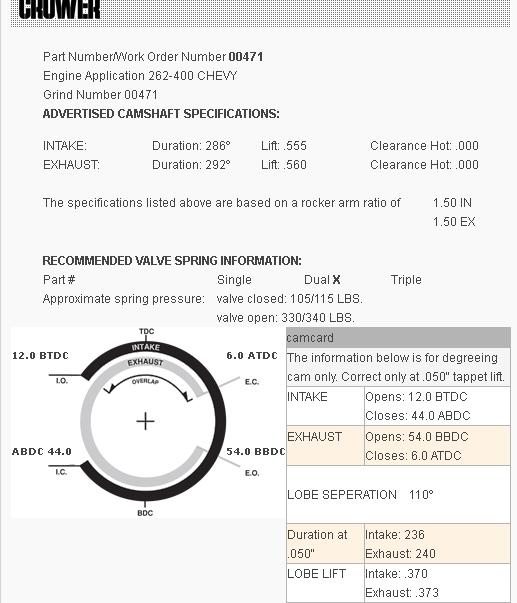
http://garage.grumpysperformance.com/index.php?threads/tbucket-engine-project-dart-shp.3814/

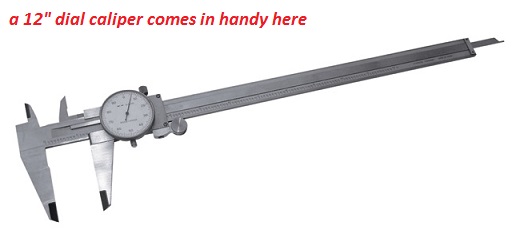
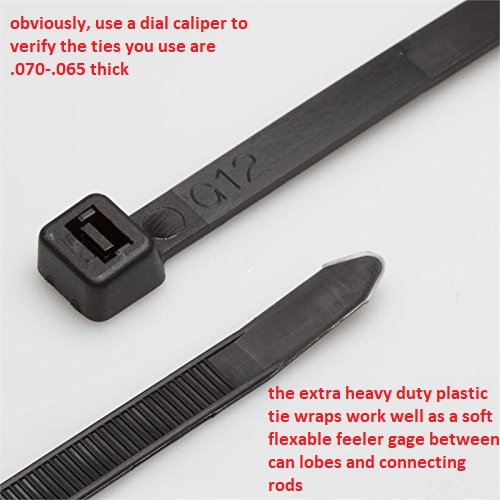
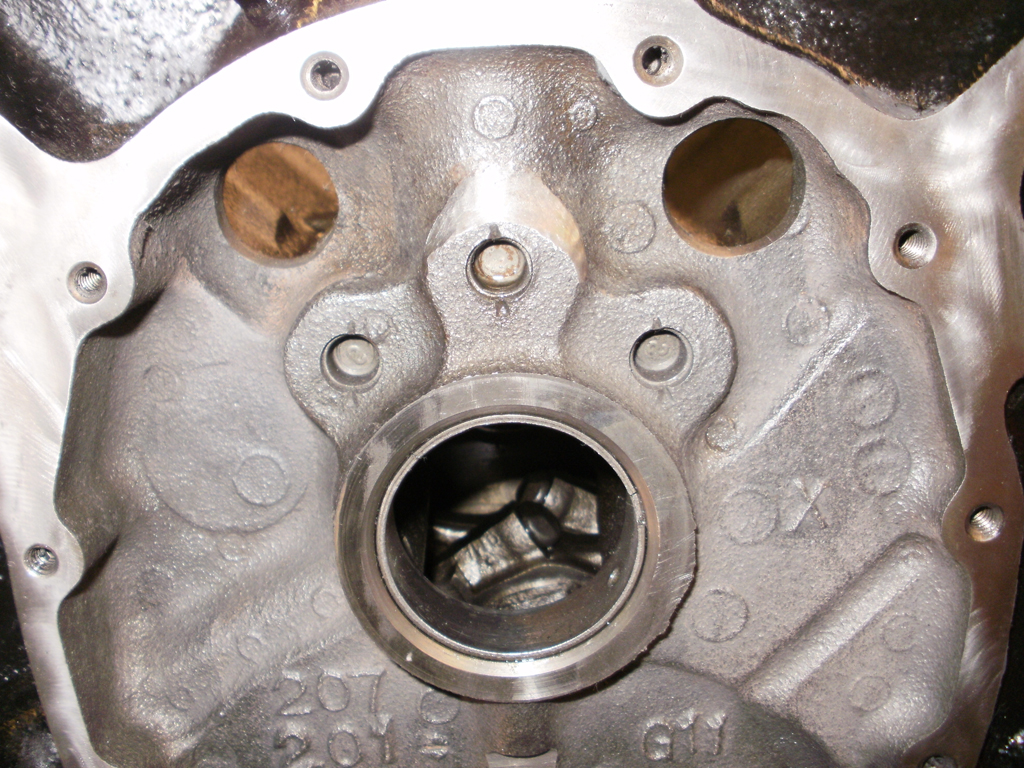
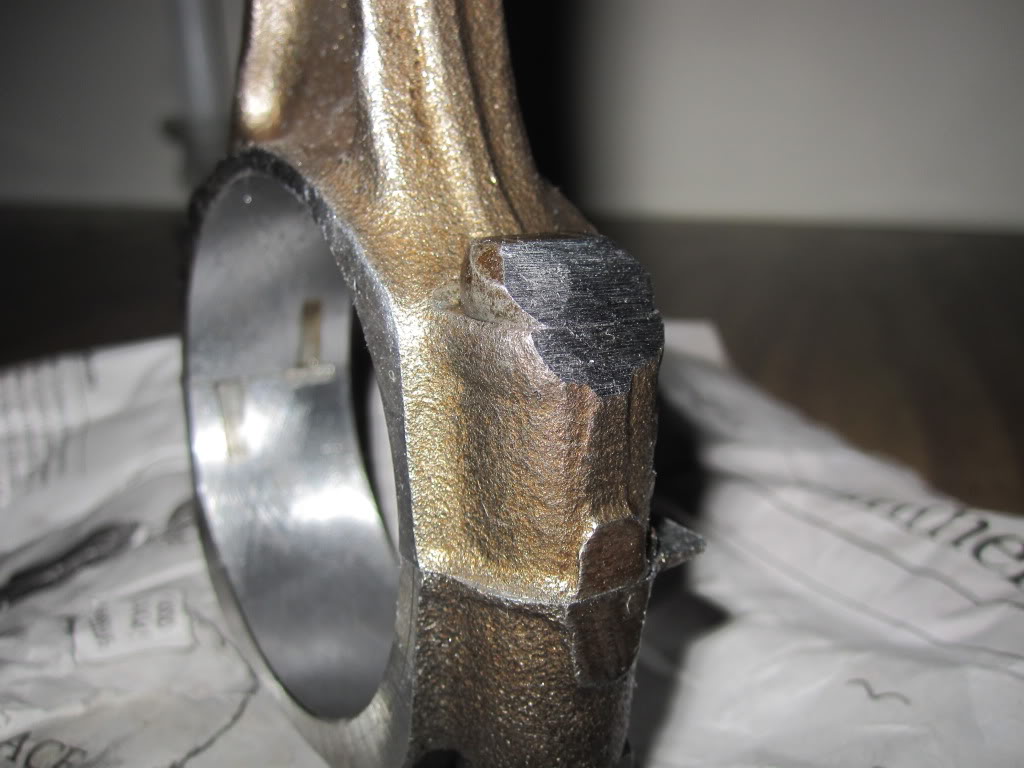
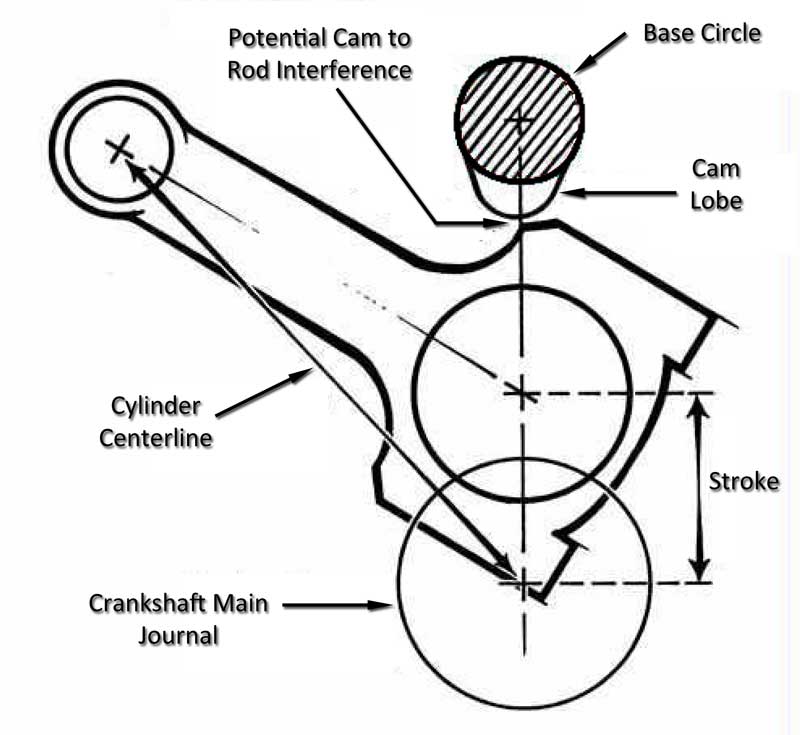
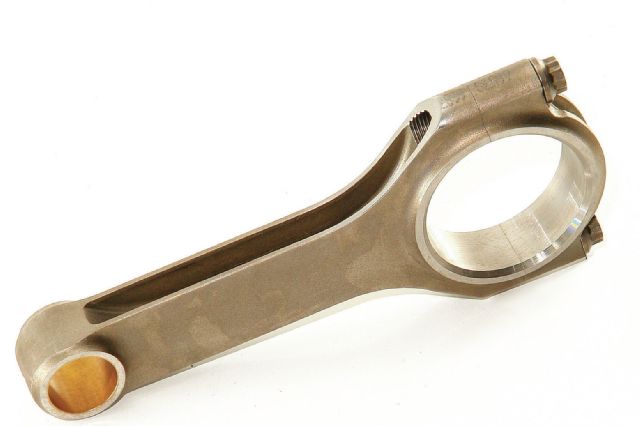
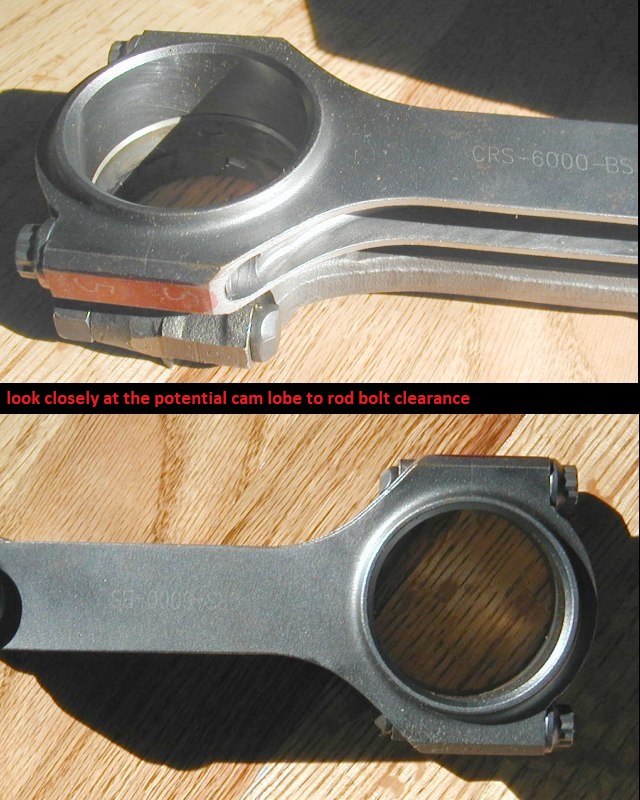
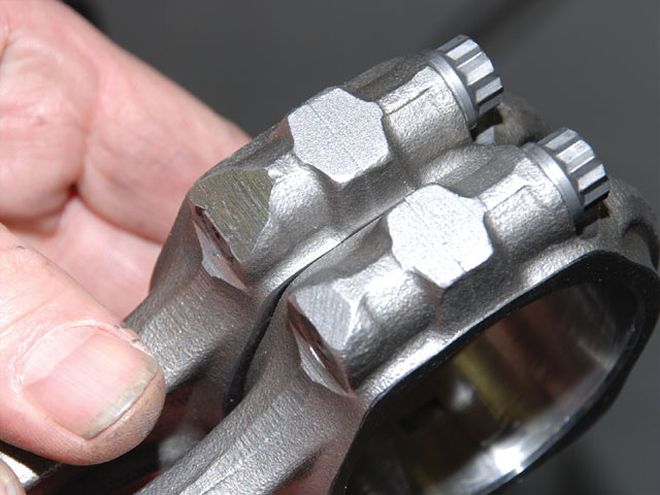
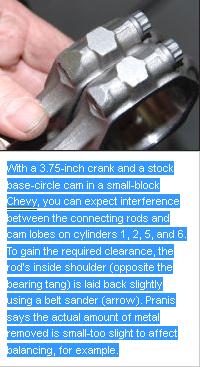
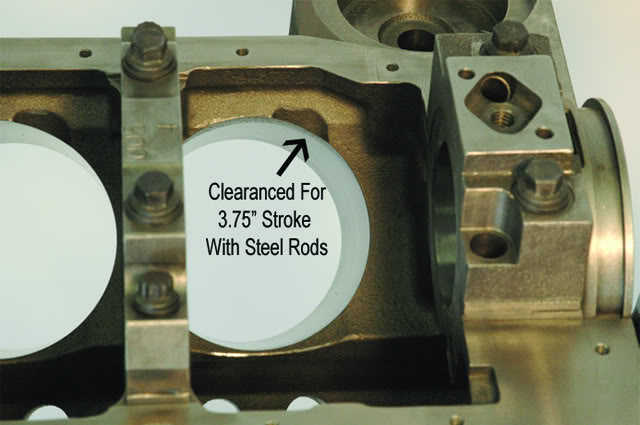
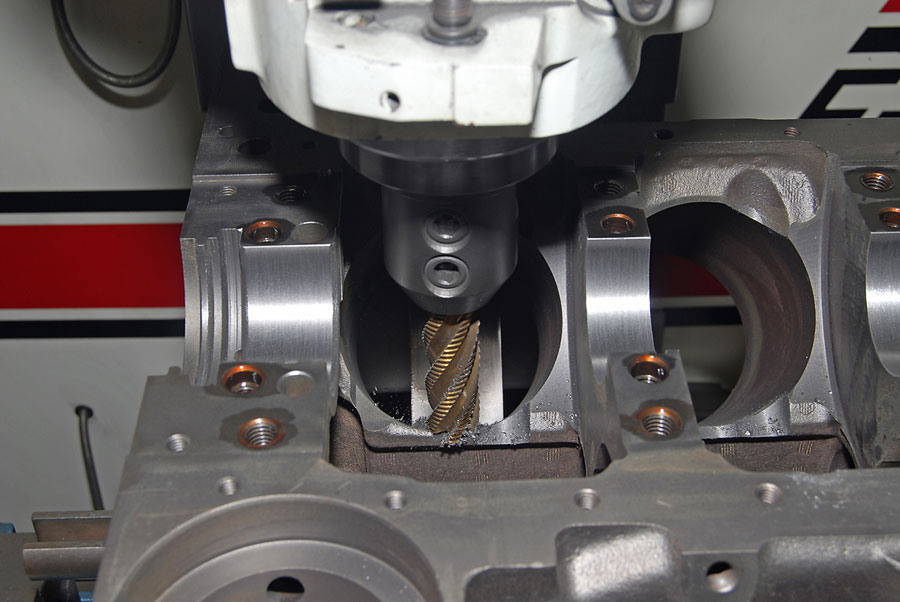
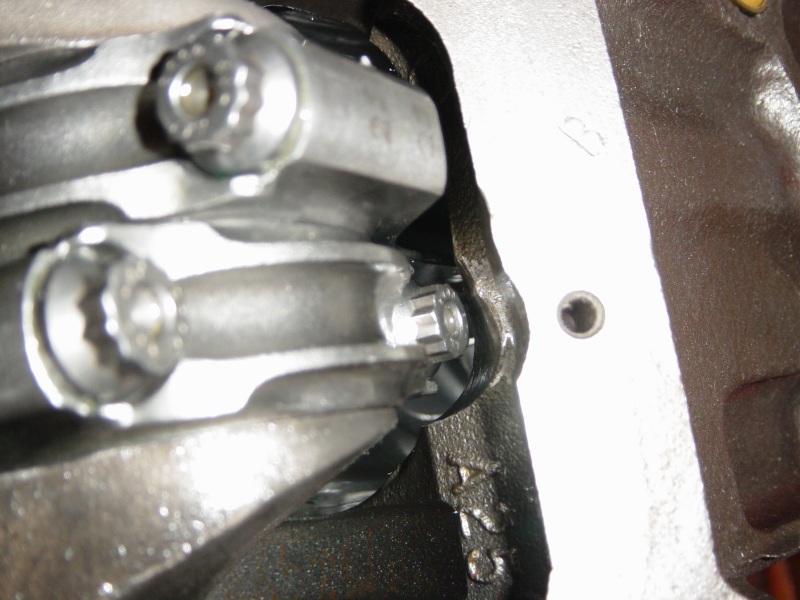
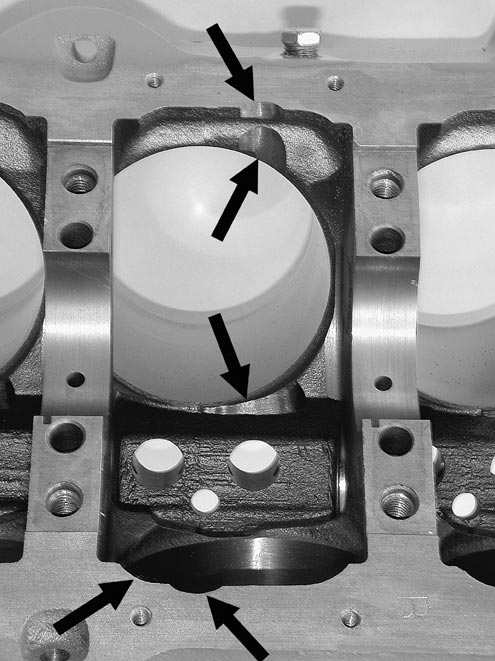
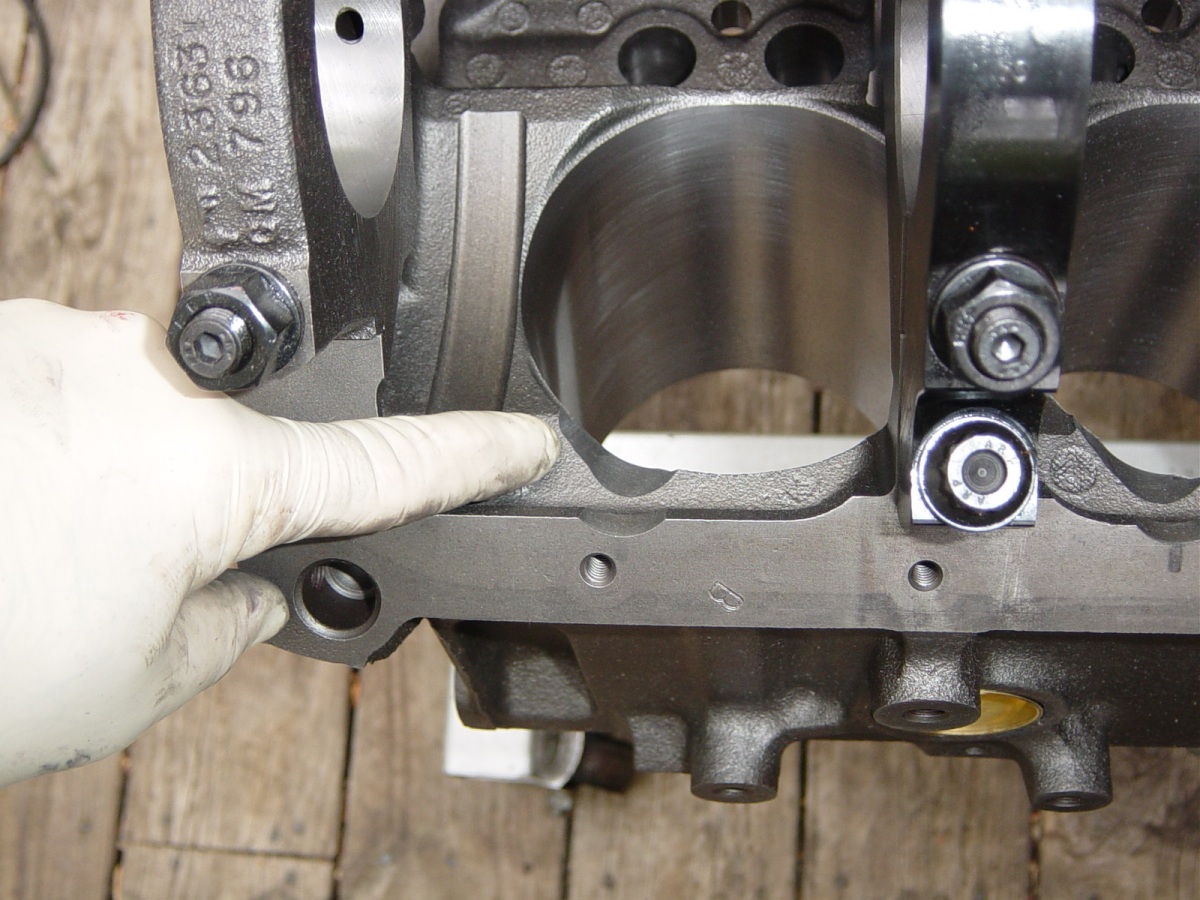
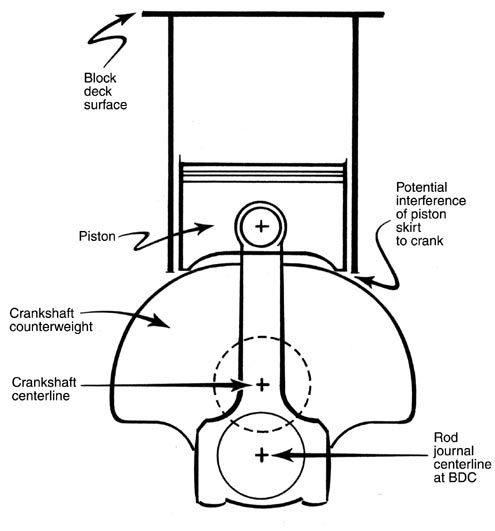
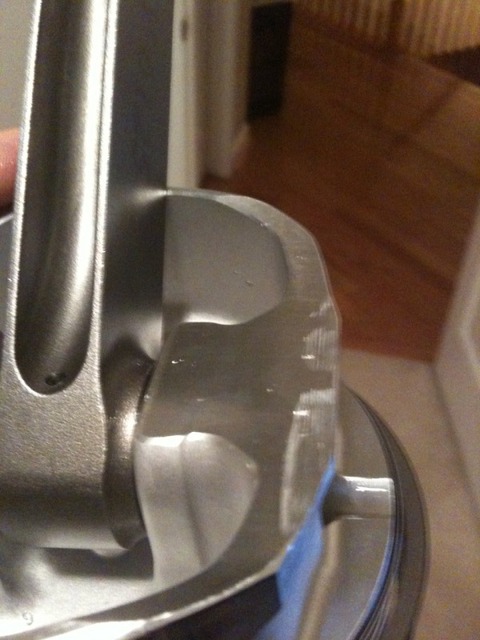
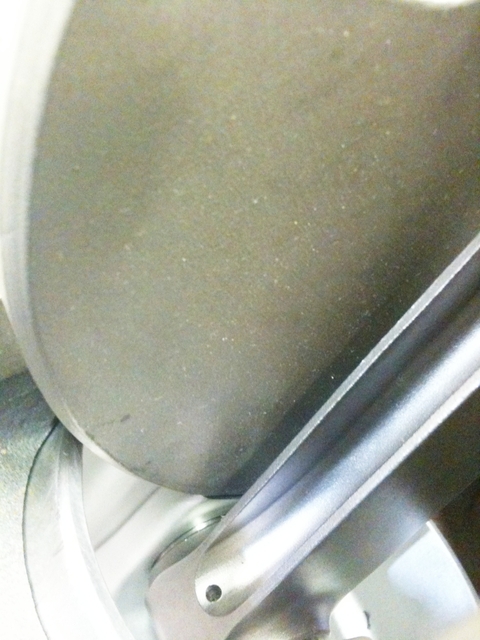
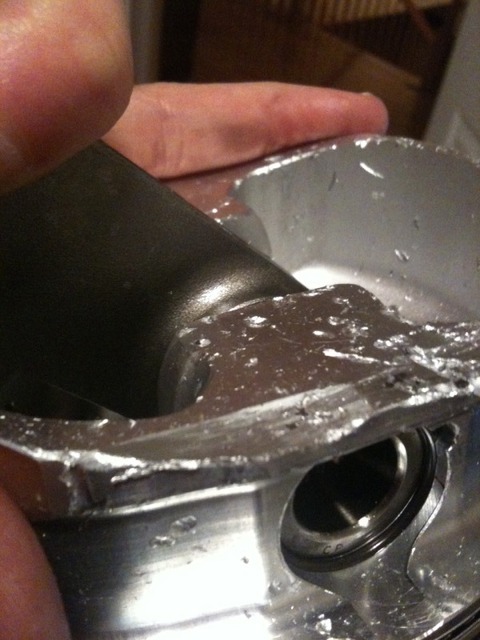
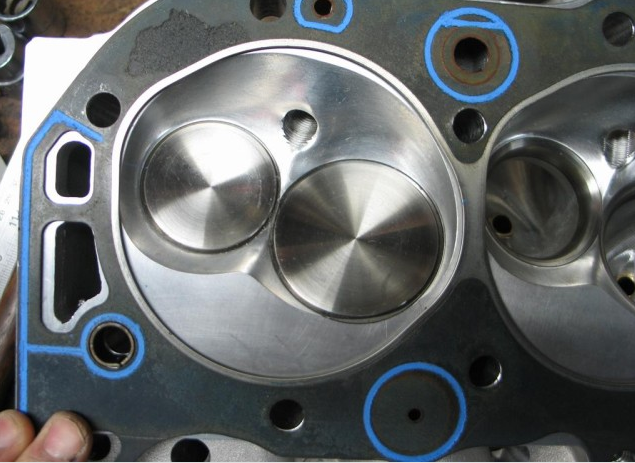
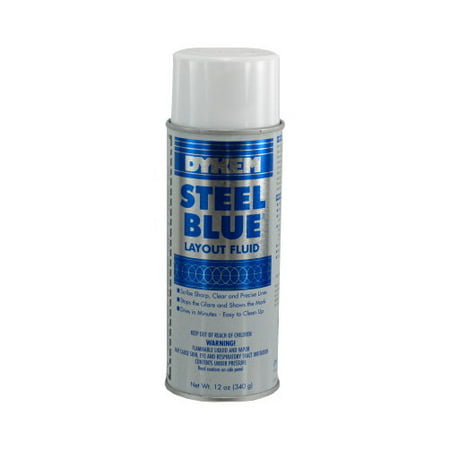

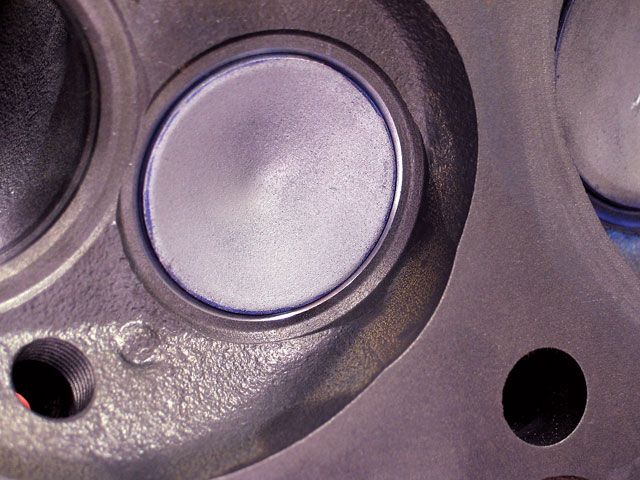
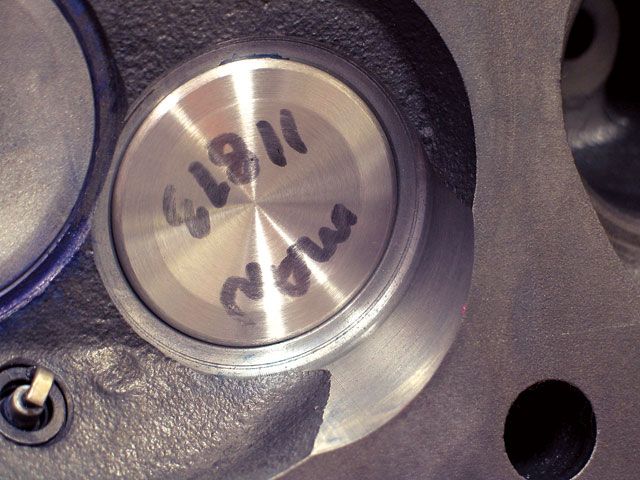
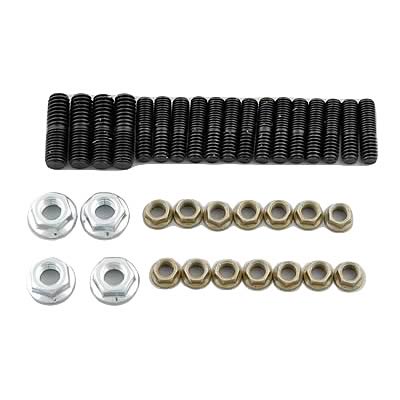

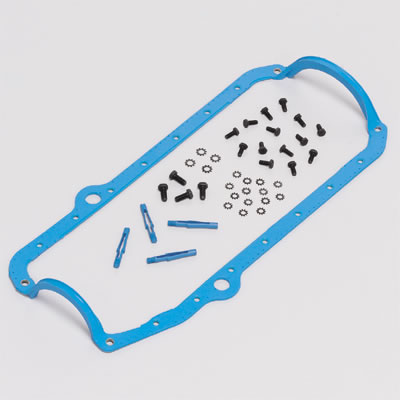



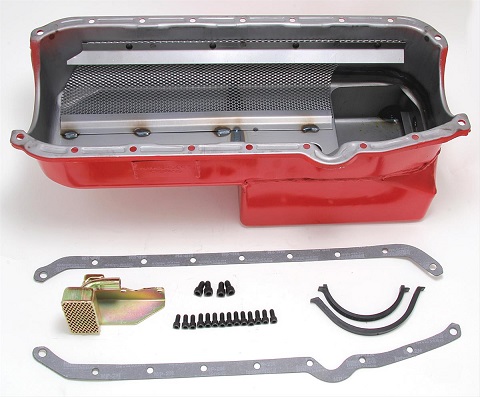

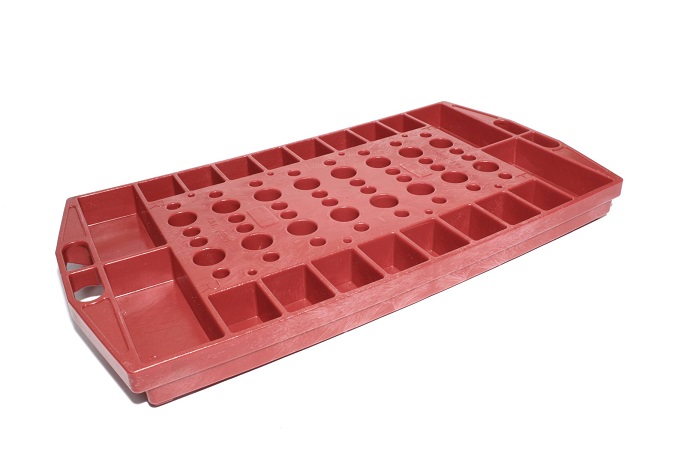
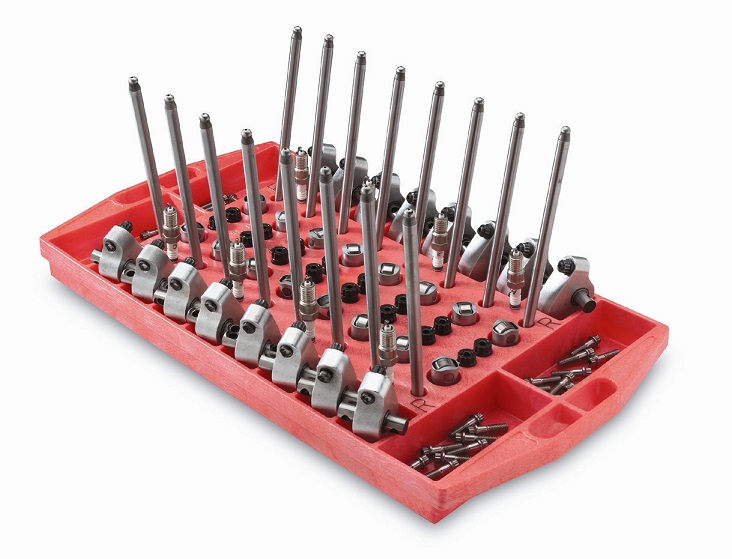
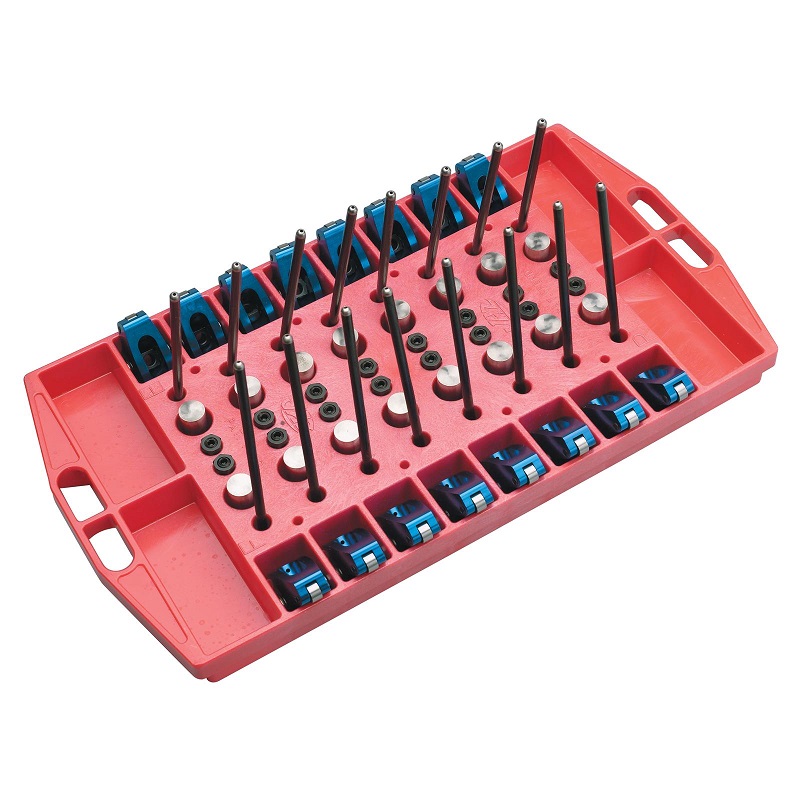
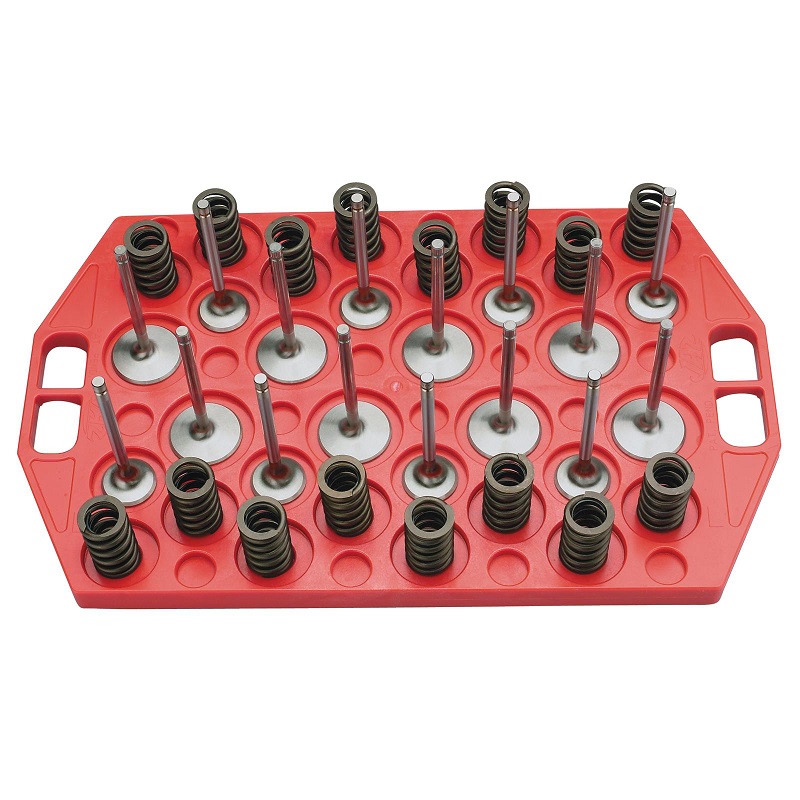

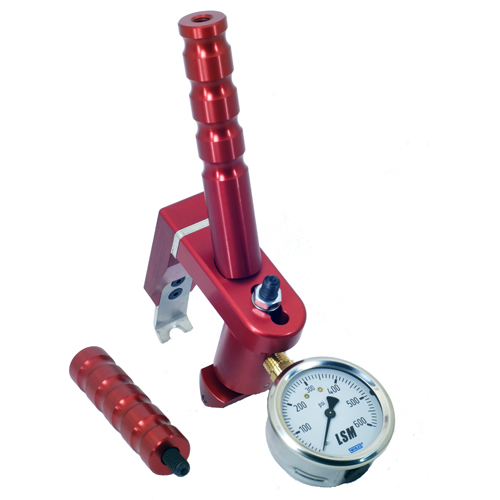
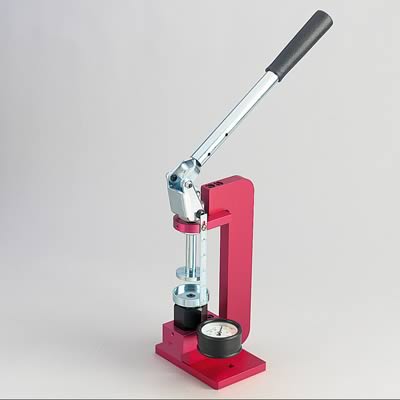

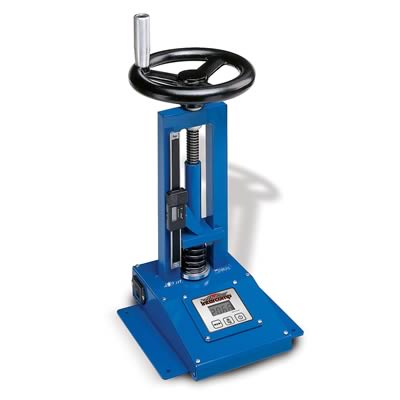
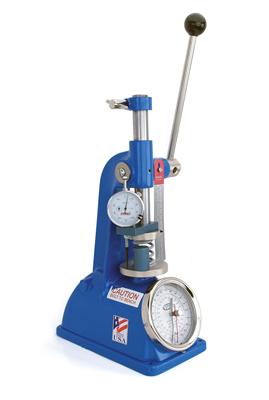

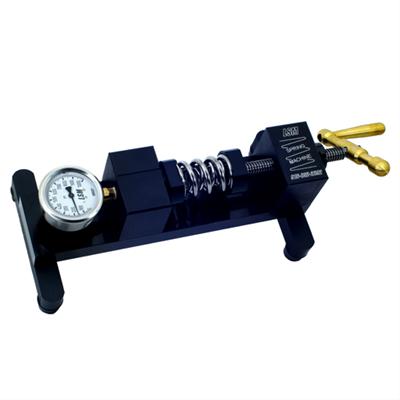
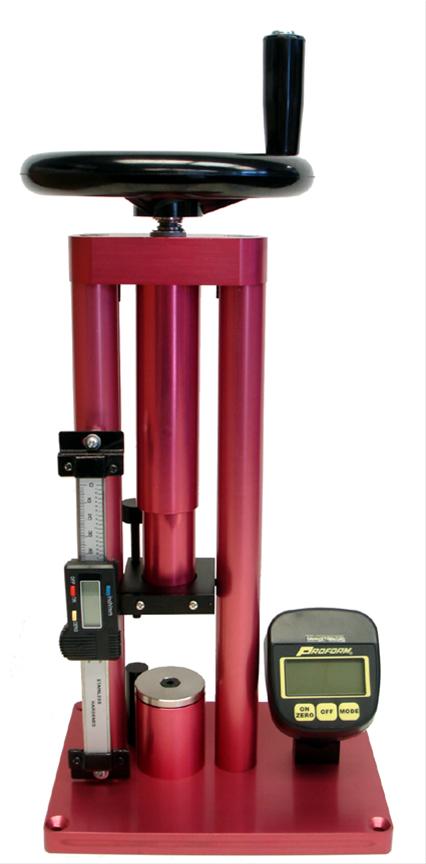
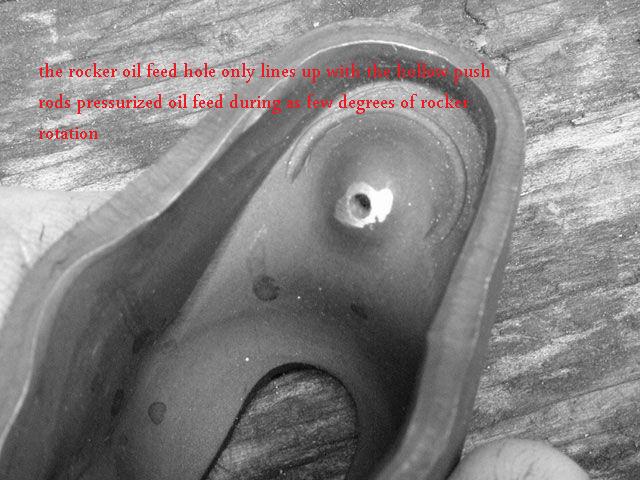
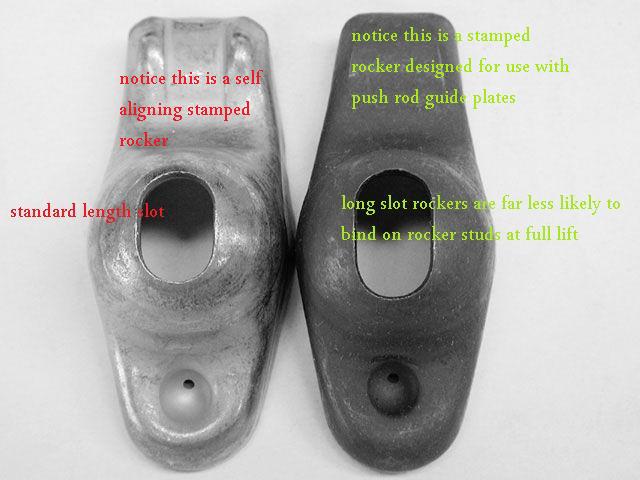
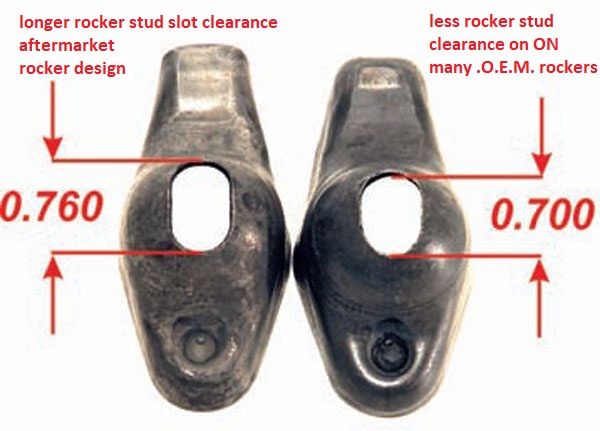
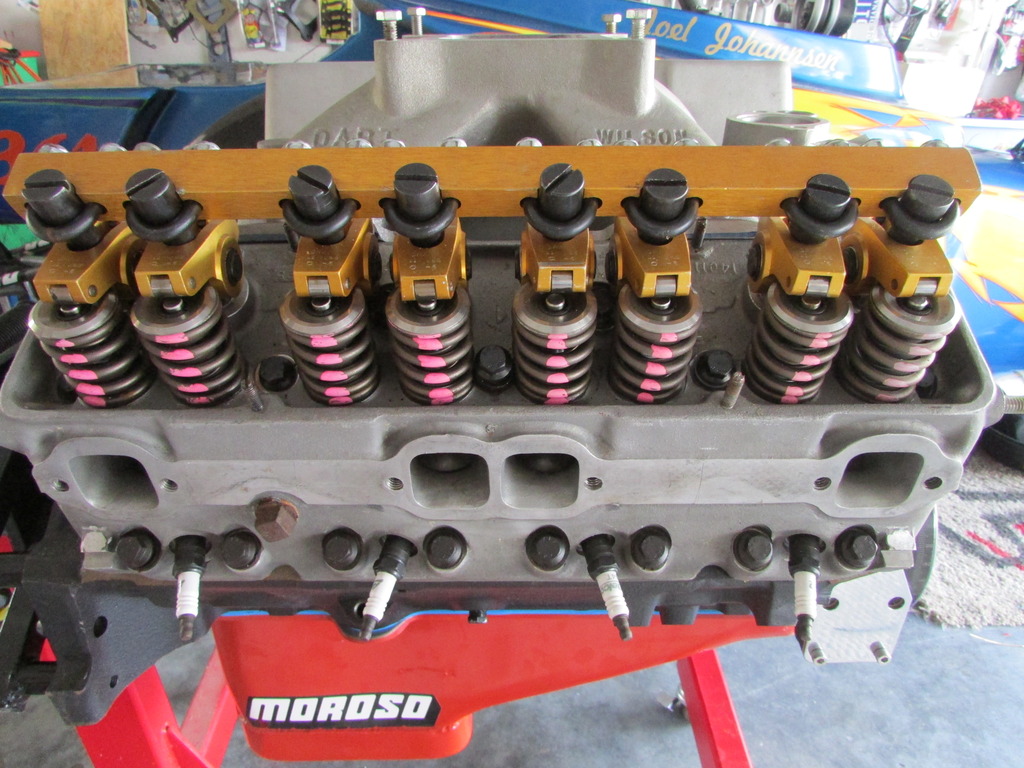
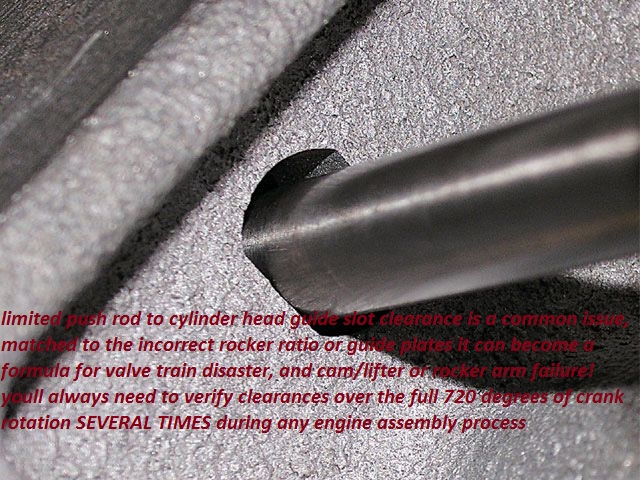



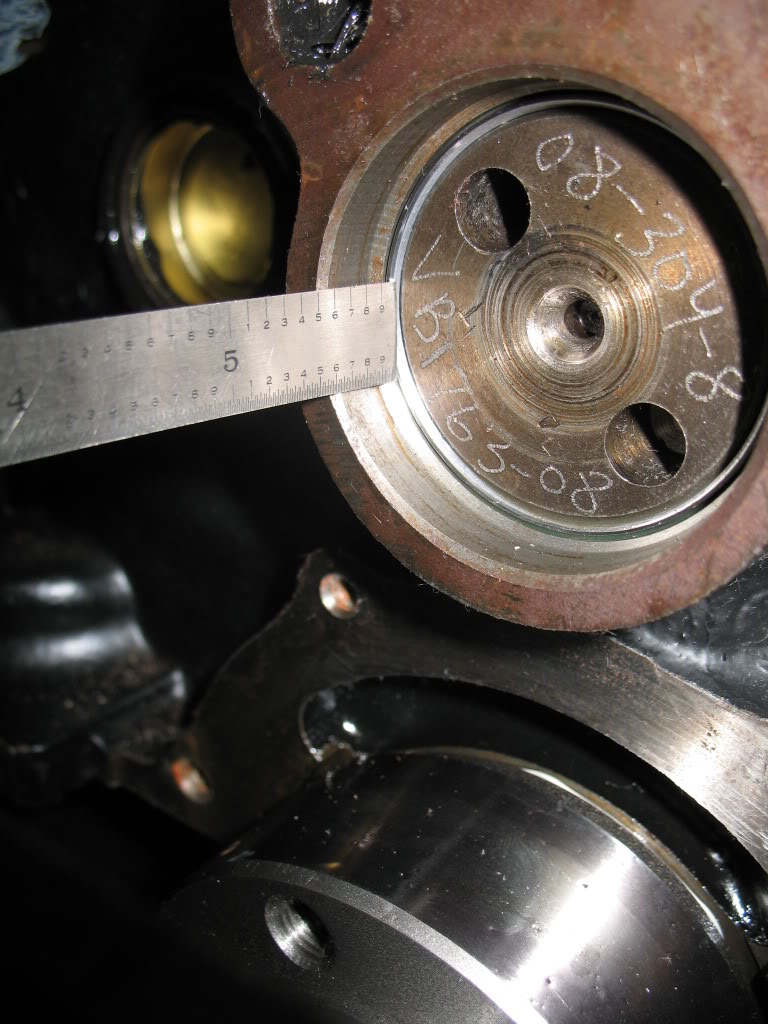

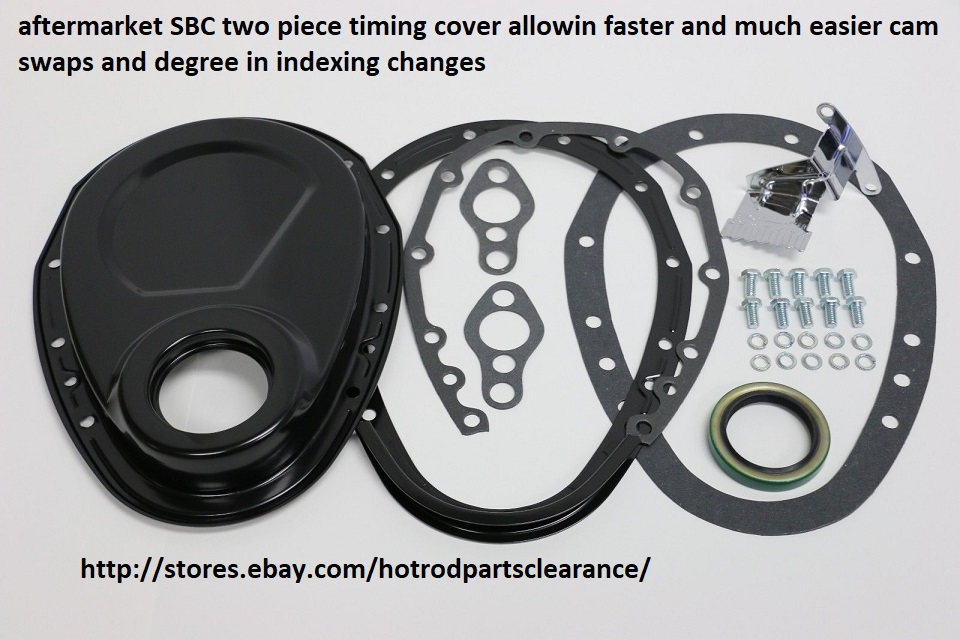
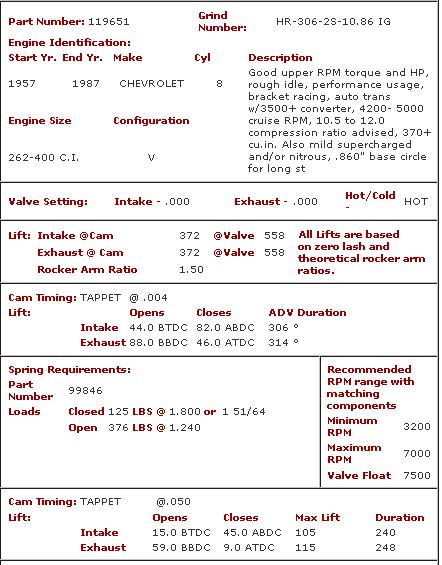
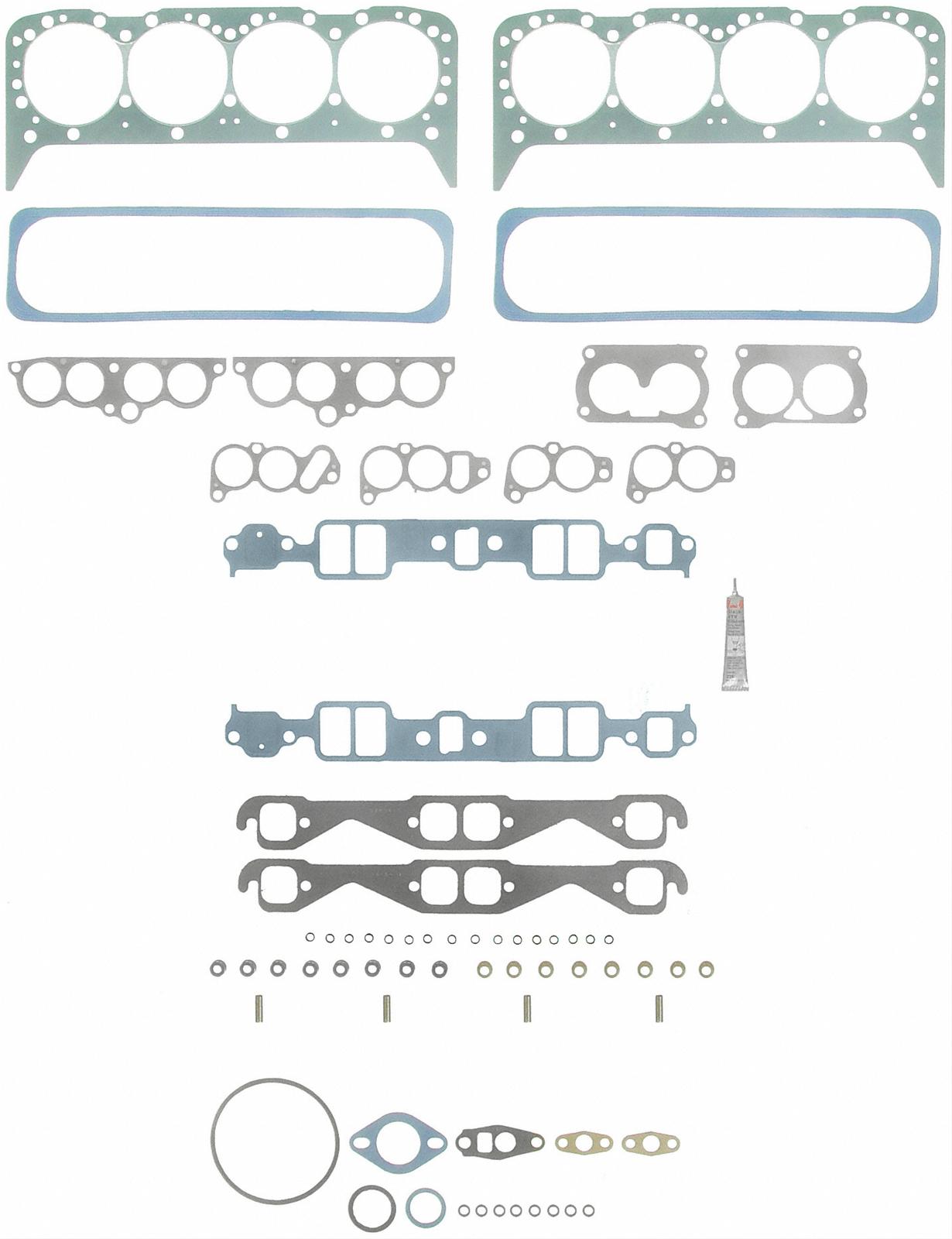


 12/13
12/13
